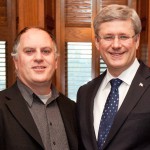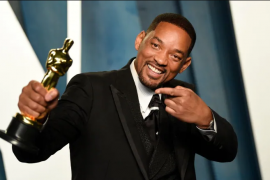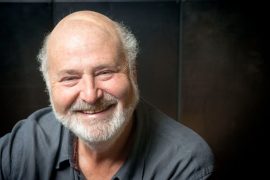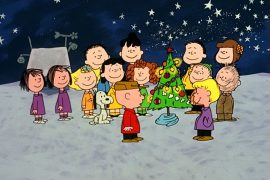I met Dick Clark–who died today at 82 of a heart attack–on the set of a show he was producing, American Dreams. This was in 2003, before his stroke, and Clark was there to work the television press shuttled to the Sunset Gower Studios (the old Columbia lot) where Dreams was based from 2002-05. “America’s Oldest Teenager” was kind of peripherally involved in that NBC drama, which was very much set in the a world Clark created, the early ’60s studio of American Bandstand.
Bandstand was so from another, more innocent time. A boyish Clark started hosting the teen music series from Philadelphia in 1956, going national the next year. He was so gosh darn American, with that trademark salute at the end of each broadcast and trademark, “For now, Dick Clark, so long” sign-off. American Idol host Ryan Seacrest, Clark’s replacement on those New Year’s Rockin’ Eve Shows, should pay Clark a royalty every time he opens his mouth.
Bandstand had a good beat and you could dance to it and it lasted into the ’80s, but really was about the ’50s. The British Invasion swept aside all of the squeaky clean Fabians and Tab Hunters and Bobby Darin’s Clark helped fabricate and mold into Bieber blueprints.
One of the most ironic Hollywood signposts I’ve ever seen is a plaque on the outside of a downtown Hollywood studio where Grey’s Anatomy now shoots. It marks the transition of Clark’s Bandstand from Philly to L.A. and is dated Feb. 10, 1964–the day after The Beatles changed everything on Ed Sullivan. Basically the day the show arrived in California, it was history.
Clark on the other hand endured for decades. He was a daytime star as host of Pyramid. His production company produced prime time series and specials, many of which he hosted. In 1973 he launched The American Music Awards, in direct competition with The Grammys, a stage Michael Jackson moonwalked into history in the mid-’80s. He was just one of those gifted broadcasters who never wore out his welcome.
Years before I met him in person, when I worked at TV Guide Canada in the ’80s and ’90s, I spoke with Clark on the phone. He was hosting Bloopers & Practical Jokes and New Year’s Rockin’ Eve at the time. He was all charm on the line, oozing that famous casual, neighbourly manner, bragging about a new brick pizza oven he’d installed in his house and suggesting if I was ever in the ‘hood, to drop over for a slice.
Never did get that address.
He was more business-y on that day on the American Dreams set. Executive Producer Jonathan Prince had gone to the trouble of bringing extras in to walk the lot in ’60s costumes and even had a Philly Cheese Steak wagon on the street set for scribes to nosh. The things we remember often have to do with our stomachs.
 |
| The jacket |
The Bandstand set was inside and journalists sat in the bleachers while Clark, Prince and the cast, which included Gail O’Grady and Will Estes, were introduced. There was some sort of raffle or draw, and I wound up winning a cool high school jacket with the name of the series stitched on one sleeve. It was handed to me by Clark.
He talked about the old days, a bit reluctantly; Clark was all about what’s happening now. He skirted around questions of Beatles and British Invasion.
Clark spoke proudly about being among the first to showcase African American entertainers. The show was slower to integrate the dancers in the studio audience as Clark candidly admitted. It was well into the show’s run before the first black kid danced with the first white kid. Bandstand was not so much of its time but slightly behind the times, the last place where civil rights were tested.
More on Clark in a later post; condolences to his wife and family.







1 Comment
could you address his creation of the American Music Awards which I believe he created as a backlash to The Grammies – ???